The Supreme Court filing on the Arizona elections lawsuit contains a number of shocking developments.
Kari Lake and Mark Finchem, both Republicans, on Thursday filed the Supreme Court appeal to ban the state’s use of electronic voting machine tabulators.
Attorney Kurt Olsen, who is working on the Arizona lawsuit, broke down the three major developments that shed more light on Maricopa County’s election malfeasance.
In April 2022, prior to the midterm elections, the two plaintiffs initiated legal proceedings against Arizona state and county election officials in federal court alleging that the voting machines lacked reliability and thus should not be authorized for use.
“Plaintiffs have a constitutional and statutory right to have their ballots, and all ballots cast together with theirs, counted accurately and transparently, so that only legal votes determine the winners of each office contested in the Midterm Election,” the complaint said.
“Electronic voting machines cannot be deemed reliably secure and do not meet the constitutional and statutory mandates to guarantee a free and fair election,” Lake and Finchem argued.
Kari Lake was a gubernatorial candidate, while Mark Finchem was the nominee for secretary of state in the midterm elections. Lake, now a Senate candidate, lost the governor’s election by a razor-thin margin, whereas Finchem lost by a more significant margin. Then Secretary of State Katie Hobbs certified her own gubernatorial victory against Lake and that of Finchem’s opponent in the secretary of state race Adrian Fontes.
U.S. District Judge John Tuchi dismissed the complaint, stating that the plaintiffs’ claims were “too speculative to establish an actual injury.”
The judge’s dismissal was upheld by the 9th U.S. Circuit Court of Appeals in October 2023, reiterating that Lake and Finchem’s assertions were speculative.
In a unanimous per curiam opinion, the three-judge panel determined that the suit contained an excessive number of hypotheticals that required proof. These hypotheticals included establishing security breaches in the election equipment, showing that the vulnerabilities were exploited, and proving that the security breaches affected the outcome of the election.
Lake and Finchem submitted a 210-page petition to the U.S. Supreme Court on Thursday, alleging that the chaos that transpired on Election Day in Maricopa County on account of erroneously certified vote tabulation machines prior to the 2022 election is a direct consequence of newly discovered evidence to that effect.
“Newly uncovered evidence also shows Arizona’s Maricopa County flagrantly violated state law for electronic voting systems—including using altered software not certified for use in Arizona — and actively misrepresented and concealed those violations,” the court filing said.
“Perhaps worse — although potentially unknown to Maricopa — the Dominion Voting Systems, Inc., systems used in Maricopa and almost thirty states have a built-in security breach enabling malicious actors to take control of elections, likely without detection.”
The Supreme Court filing pointed out that Maricopa County had “experienced a massive disruption with its electronic voting machines” during the 2022 general election.
“Evidence from Maricopa’s tabulator system log files presented to the Arizona Senate Committee on Elections showed that on Election Day, Maricopa’s vote center tabulators rejected over 7,000 ballots every thirty minutes beginning almost immediately after the vote centers opened at 6:00 am and continuing past 8:00 pm — totaling over 217,000 rejected ballot insertions on a day when approximately 248,000 votes were cast.”
The Supreme Court filing contains sworn affidavits from qualified witnesses to the election malfeasance in Maricopa County, including from election integrity expert Dr. Walter Daugherity:
Ballot Tabulation Failures: There was an extremely large number of ballot tabulation failures at the 223 voting centers in Maricopa County on Election Day, including 180,894 errors which were printer or system failures, as documented in the tabulator System Log files. A total of 138 of these 223 vote centers show a ballot insertion rejection rate of 20% or more, which is 100 or more times the EAC’s acceptable limit of 0.2%.
41. Timing of Ballot Insertion Errors: Across the county, over 7,000 ballot insertion failures occurred in almost every single 30-minute period for the entirety of Election Day, starting at 7:00 A.M. and continuing to 8:00 P.M., with a smaller number of failures prior to 7:00 A.M. and after 8:00 P.M. This was thus an enormous and continuous problem which did not get better overall during Election Day, despite numerous technicians’ making adjustments throughout the day.
42. Inconsistencies in the Redacted Cast Vote Record: 43 voting centers do not appear at all in the redacted CVR, but are listed in the County’s reconciliation report (attached as Exhibit C) as having been tabulated at Central Count instead of using the voting center results recorded on their memory cards,
43. Mismatched Signatures: With 99.999% confidence, the projected number of mismatched signatures in 2022 is at least 127,186 out of 1,311,734 early votes.
Dr. Daugherity explained how “insertion errors” wreaked havoc in Maricopa County’s election.
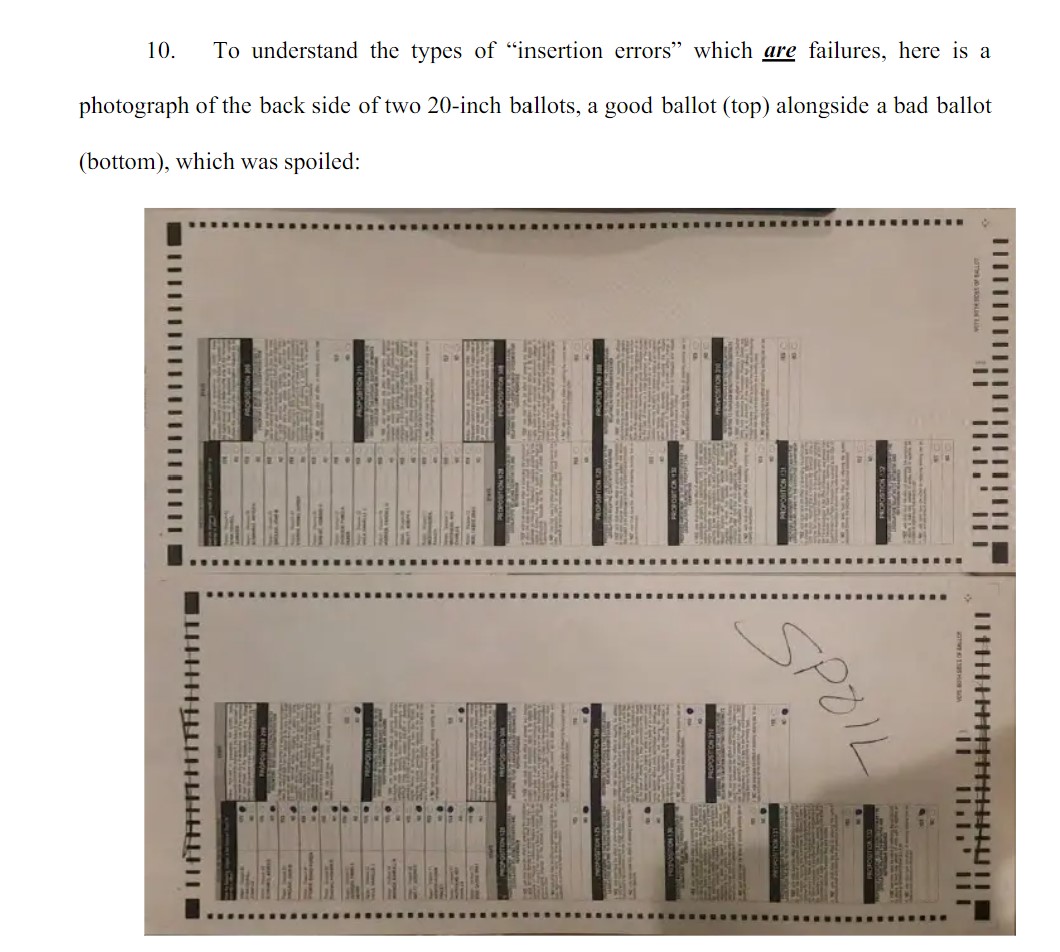
The SCOTUS filing contains a flow chart of voting procedures that lead to failures.
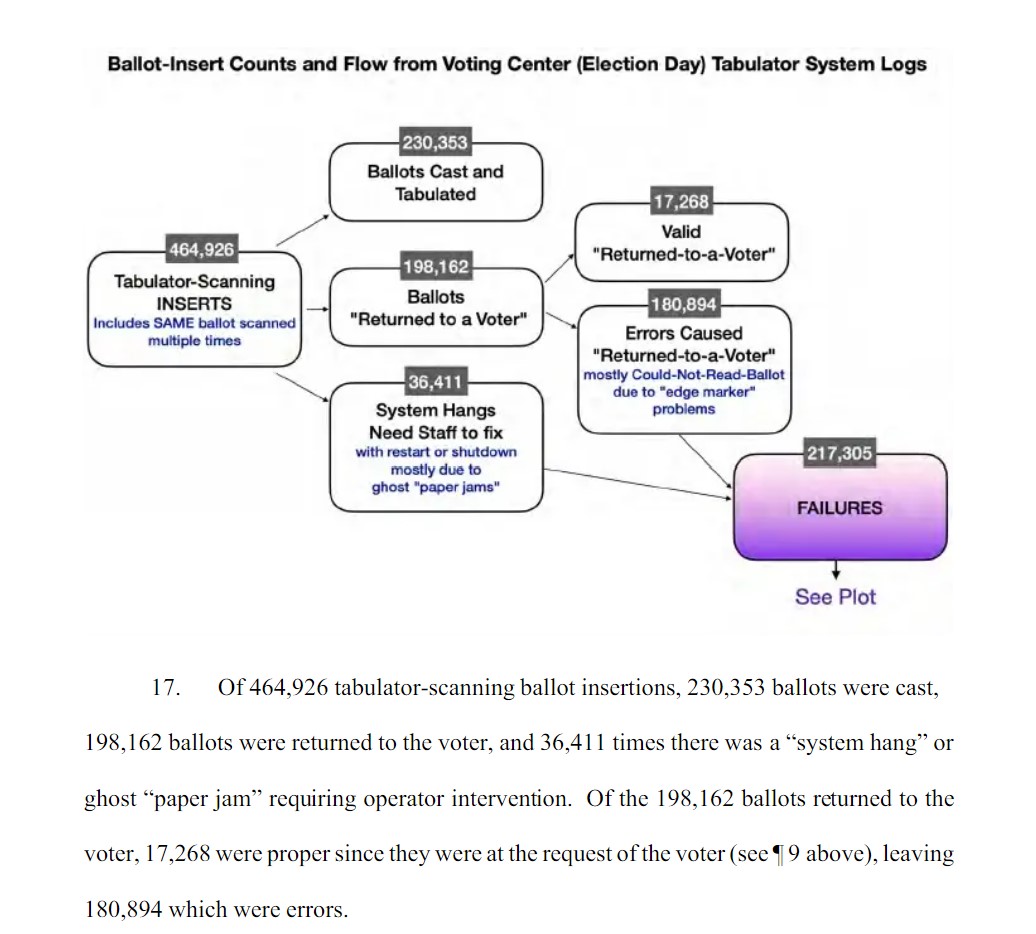
“Of 464,926 tabulator-scanning ballot insertions, 230,353 ballots were cast,198,162 ballots were returned to the voter, and 36,411 times there was a “system hang” or ghost “paper jam” requiring operator intervention. Of the 198,162 ballots returned to the voter, 17,268 were proper since they were at the request of the voter (see ¶ 9 above), leaving180,894 which were errors,” Dr. Daugherity noted.
The election integrity expert then showed the “count of ballot insert failures” as shown in a timeline throughout the day.
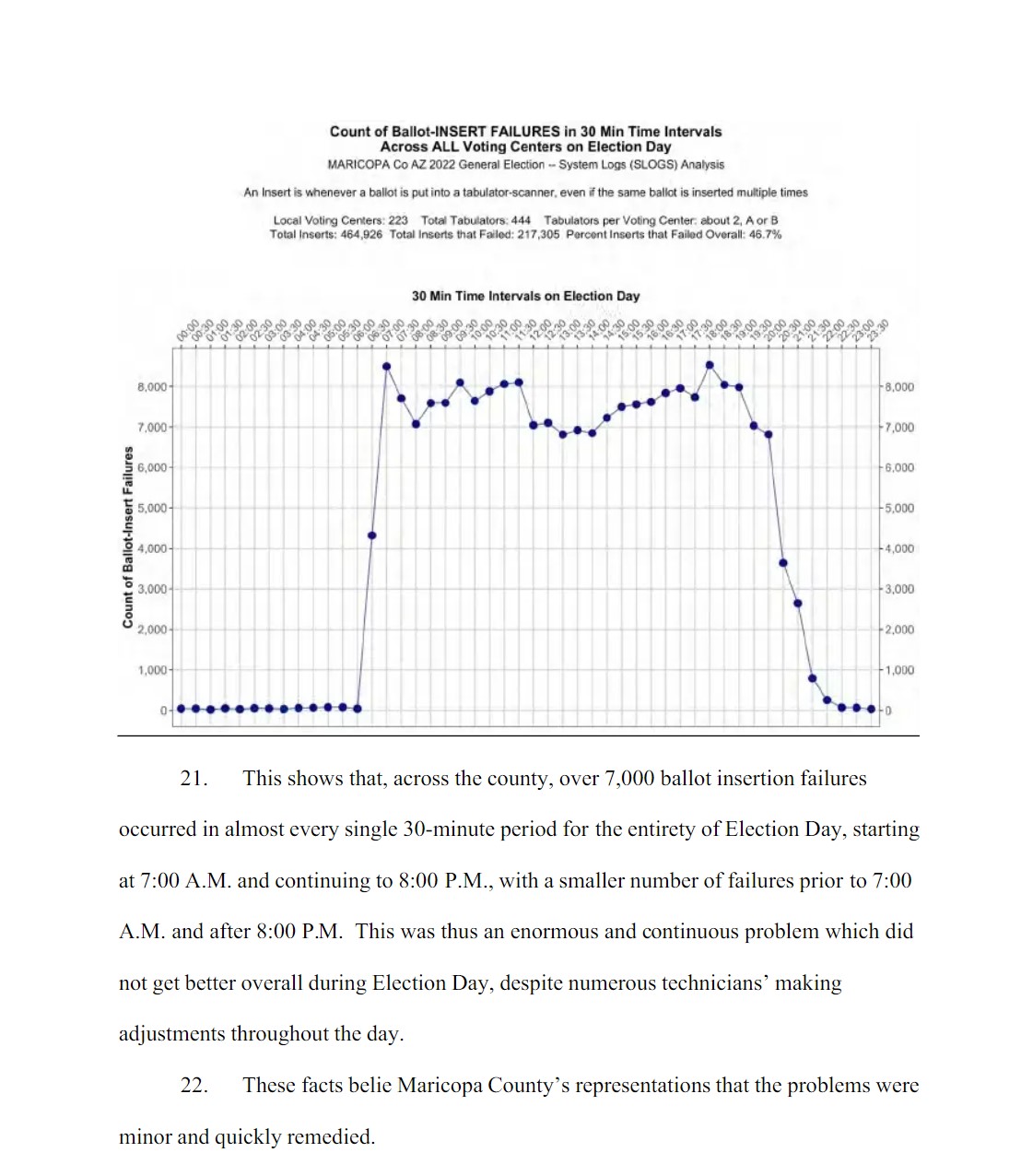
“This shows that, across the county, over 7,000 ballot insertion failures occurred in almost every single 30-minute period for the entirety of Election Day, starting at 7:00 A.M. and continuing to 8:00 P.M., with a smaller number of failures prior to 7:00A.M. and after 8:00 P.M.,” he noted. “This was thus an enormous and continuous problem which did not get better overall during Election Day, despite numerous technicians’ making adjustments throughout the day.”
This caused massive upheaval and long voting lines, as were documented by several voters and election observers.
Here is the problem w/ what happened in Maricopa County on Election Day. This is Anthem, north of Phoenix at about 1:15 pm. Ruby red district of about 30K people. Only one polling location. Ballot tabulators not working in the morning. 2 hr wait to vote midday and still at 6 pm. pic.twitter.com/CY35yQWwq5
— Randy DeSoto (@RandyDeSoto) November 14, 2022
As conservative influencer Charlie Kirk pointed out, voting machine malfunctions in predominately red precincts in Maricopa County became the source of contention that voters were being “disenfranchised.”
This same scene played out tens of thousands of times all across Maricopa County. How many voters were disenfranchised or simply ran out of time? If the majority of ED voters were Democrats, this would be the number 1 news story in America still today. Total joke pic.twitter.com/noY1RRQv0Q
— Charlie Kirk (@charliekirk11) November 14, 2022
Disturbingly, Dr. Daugherity points out that it is not possible to know the true outcome of voting at 43 voting centers because of the ‘reconciliation’ procedure at Central Count without accompanying voting center results recorded locally on memory cards.
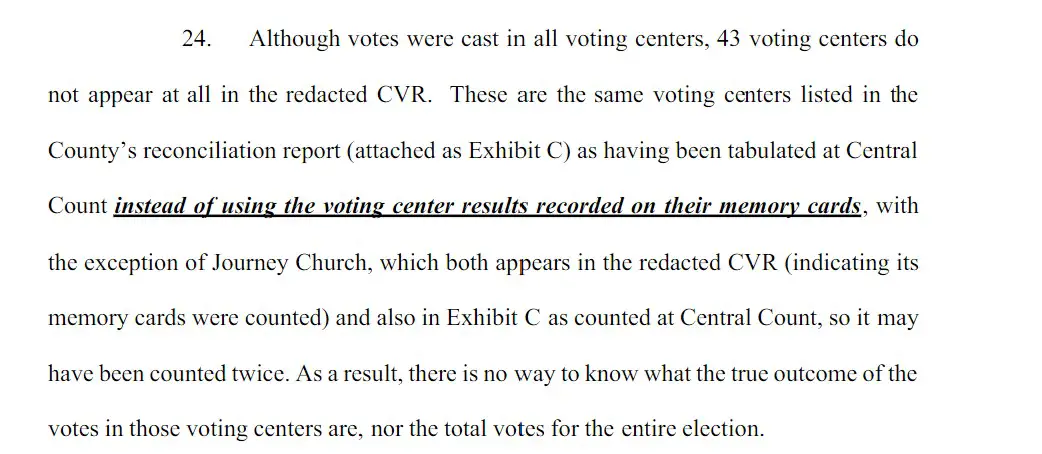
“As a result, there is no way to know what the true outcome of the votes in those voting centers are, nor the total votes for the entire election,” he noted.
Maricopa County, Arizona election auditor Benjamin R. Cotton testified that “It is clear, based on my findings, that unauthorized programs, databases, configuration settings and actions were present on the voting systems in Maricopa County for the elections in both 2020 and 2022.”
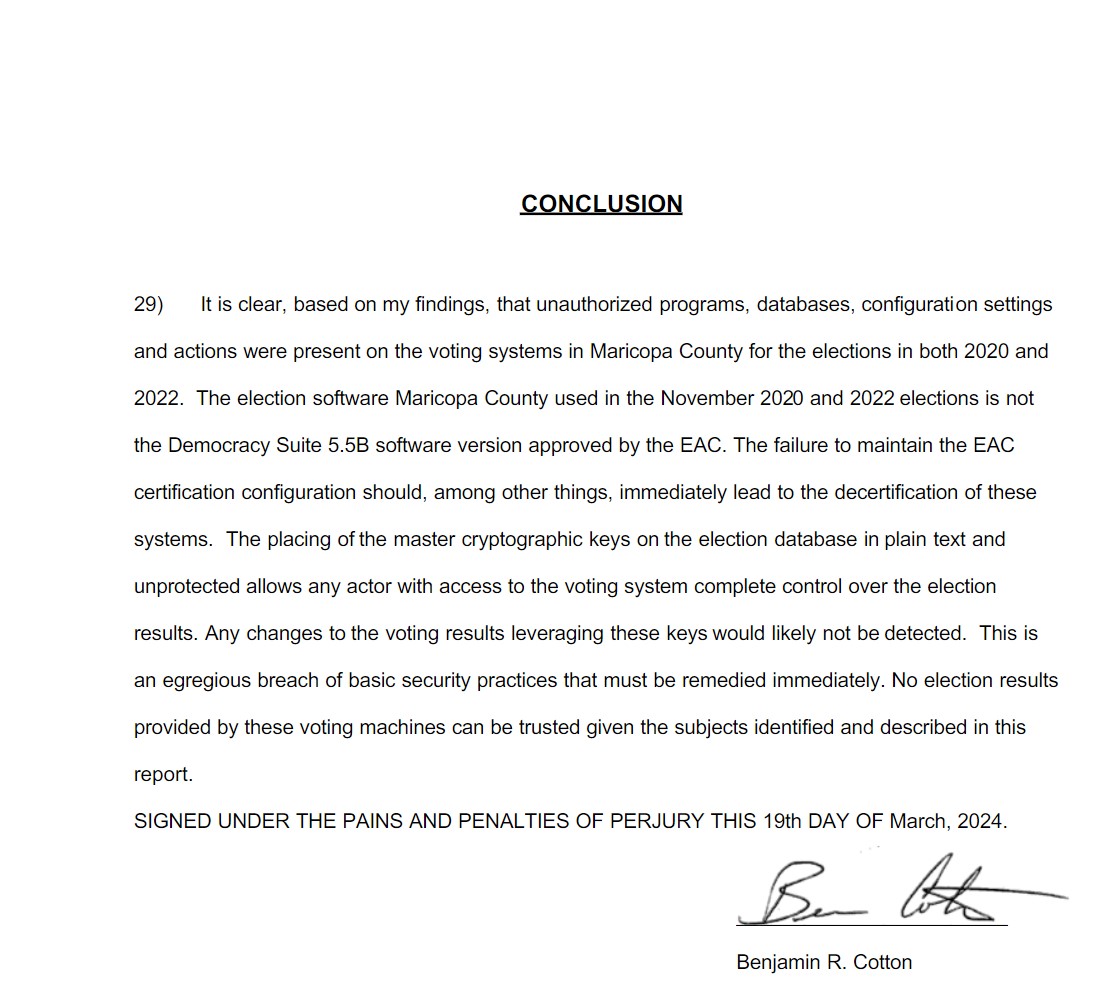
“The election software used in the November 2020 and 2022 elections is not the Democracy Suite 5.5B software version approved by the EAC. The failure to maintain the EAC certification configuration should, among other things, immediately lead to the decertification of these systems. The placing of the master cryptographic keys on the election database in plain text and unprotected allows any actor with access to the voting system complete control over the election results. Any changes to the voting results leveraging these key would likely not be detected. This is an egregious breach of basic security practices that must be remedied immediately,” he added.
The election auditor then displayed that there were concerning securing lapses, which he described as a “flagrant failure to protect the election encryption and decryption keys within the election databases.”
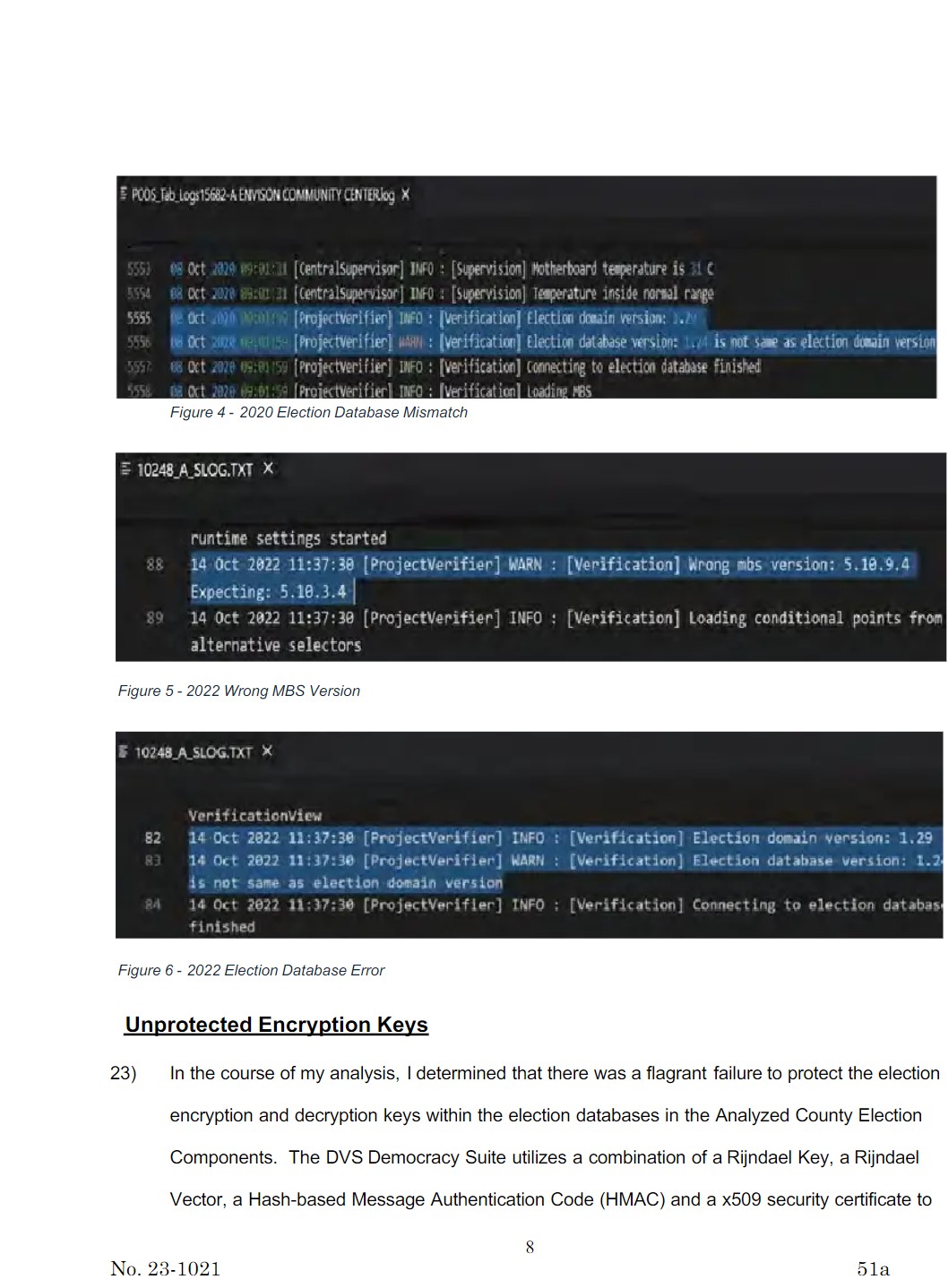
There was a “god key” detected in the voting machine code. As summarized by Patrick Byrne, “Dominion placed the master cryptographic keys in plain text and unprotected on the election database except for Windows-login, which are easily bypassed. Leaving these highly sensitive cryptographic keys in this state violates all cyber security protocols and allows a malicious actor to take control of the machine and change results without detection.”
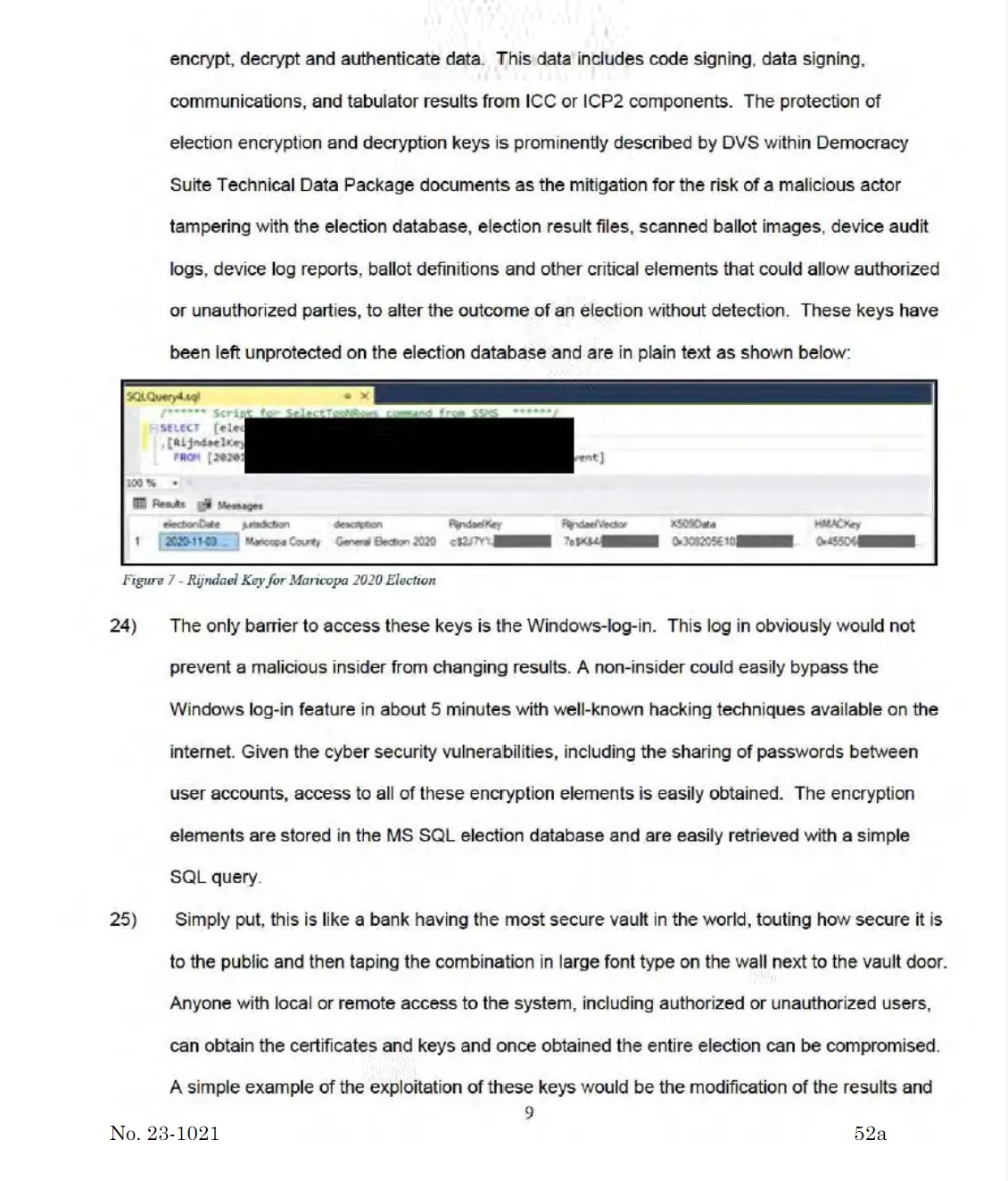
As Mr. Cotton stated in his declaration: “It is like a bank having the most secure vault in the world, touting how secure it is to the public and then taping the combination in large font type on the wall next to the vault door.”
The lawsuit filing can be read below:
SCOTUS Filing: Arizona Laws… by Kyle Becker
The Supreme Court filing’s appendix can be found below:
SCOTUS Filing: Arizona Laws… by Kyle Becker
NOW READ:
“This is an Attack on America”: Shark Tank Celebrity’s Rant Against Woke Left Policies Goes Viral


